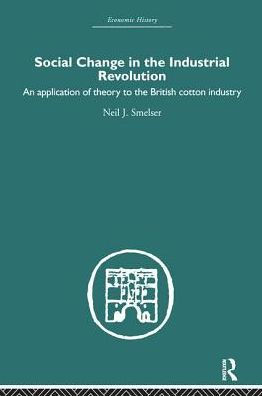Social Change in the Industrial Revolution: An Application of Theory to the British Cotton Industry
First Published in 2005. The following'study analyses several sequences of differentiation and a attempt to apply social theory to history. Such an analysis naturally calls for two components: (1) a segment of social theory; and (2) an empirical instance of change. For the first the author has selected a model of social change from a developing general theory of action; for the second, the British industrial revolution between 1770 and 1840. From this large revolution is the isolated the growth of the cotton industry and the transformation of the family structure of its working classes.
1137714138
Social Change in the Industrial Revolution: An Application of Theory to the British Cotton Industry
First Published in 2005. The following'study analyses several sequences of differentiation and a attempt to apply social theory to history. Such an analysis naturally calls for two components: (1) a segment of social theory; and (2) an empirical instance of change. For the first the author has selected a model of social change from a developing general theory of action; for the second, the British industrial revolution between 1770 and 1840. From this large revolution is the isolated the growth of the cotton industry and the transformation of the family structure of its working classes.
250.0
In Stock
5
1

Social Change in the Industrial Revolution: An Application of Theory to the British Cotton Industry
456
Social Change in the Industrial Revolution: An Application of Theory to the British Cotton Industry
456Hardcover
$250.00
250.0
In Stock

Product Details
| ISBN-13: | 9780415381376 |
|---|---|
| Publisher: | Taylor & Francis |
| Publication date: | 11/03/2005 |
| Series: | Economic History |
| Pages: | 456 |
| Product dimensions: | 6.12(w) x 9.19(h) x (d) |
From the B&N Reads Blog
